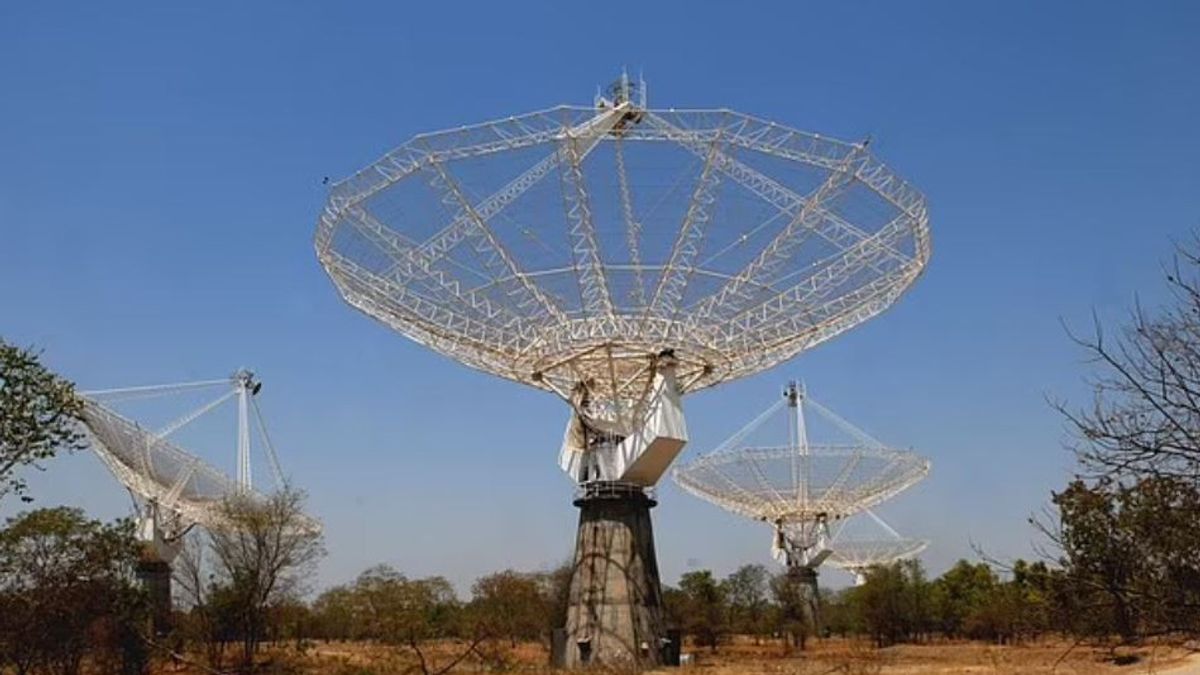JAKARTA - A radio signal from a galaxy nearly 9 billion light years away from Earth has been captured by scientists. Researchers in Canada and India managed to capture signals from a galaxy named 'SDSSJ0826+5630', with the help of a giant telescope in India.
Radio waves allowed astronomers to peer back in time and understand the early universe, which is estimated to be about 13.7 billion years old.
"This is the equivalent of looking back in time 8.8 billion years," Arnab Chakraborty, cosmologist, and co-author of the study on wave detection told The Metro.
The signal was not sent by aliens, before you jump to any conclusions, but rather came from a star-forming galaxy that was emitted when the universe was only 4.9 billion years old. This is the first radio signal detection of its kind over a great distance.
VOIR éGALEMENT:
"A galaxy emits different types of radio signals," Chakraborty told The Metro. "Until now, it was only possible to pick up on this particular signal from a nearby galaxy, limiting our knowledge to galaxies closer to Earth."
The Royal Astronomical Society announces the breakthrough revelation in their monthly notification.
Wave detection is a very important discovery because the frequency is at a certain wavelength known as the '21cm line'. This is also known as the hydrogen line and is a spectral line of electromagnetic radiation with a frequency of 1420.
Hydrogen is scattered in space and can help map galaxies. The 21cm line is used to do this.
The giant telescope in India is able to pick up faint signals due to gravitational lensing. This is a naturally occurring phenomenon.
The study's co-authors explained to The Metro that gravitational lensing is a natural phenomenon that 'amplifies signals coming from distant objects to help us peer into the early universe'.
Another galaxy warped the radio signal emitted from 'SDSSJ0826+5630', which amplified the waves and allowed telescopes in India to pick them up.
Researchers have used the detection to measure the atomic mass content of galaxies. Scientists found that this particular galaxy is almost twice the mass of stars visible to us from Earth.
The English, Chinese, Japanese, Arabic, and French versions are automatically generated by the AI. So there may still be inaccuracies in translating, please always see Indonesian as our main language. (system supported by DigitalSiber.id)


















